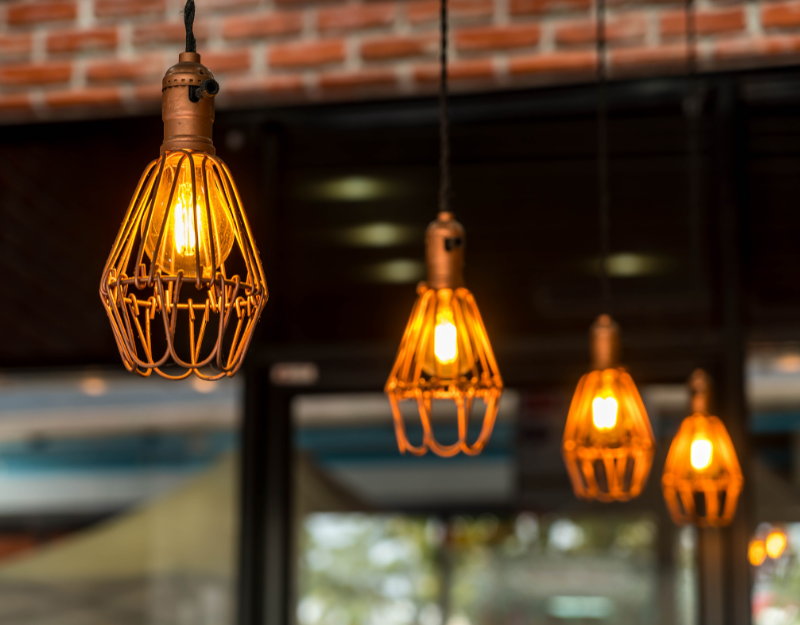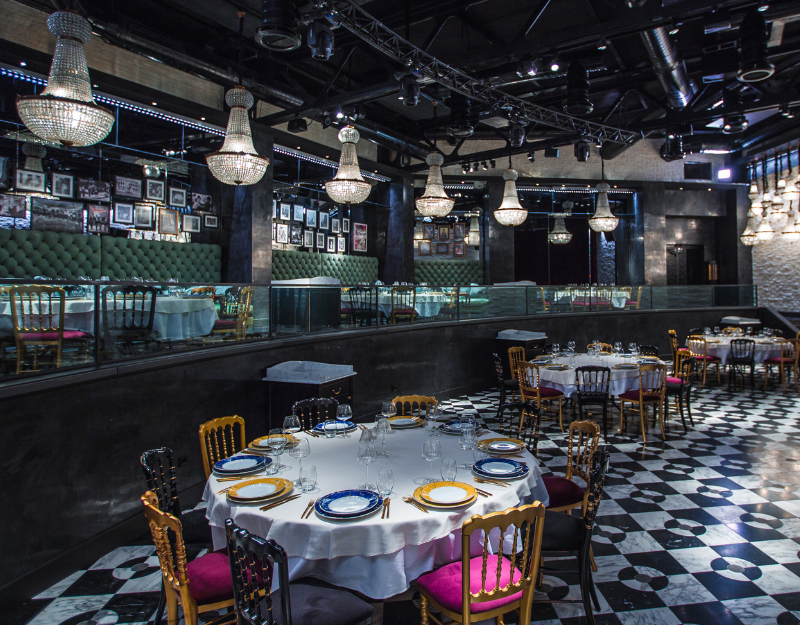Are you looking to make your ice cream shop design stand out? You have landed at the right place today. Read on for some creative ice cream shop design ideas. Following these can help you get customers lining up for your ice cream parlor’s Instagram-worthy interiors and delicious frozen treats. From bold color schemes to whimsical decor elements, these ice cream shop interior design tips will help you craft a vibrant, memorable space that keeps people coming back for more. Let’s explore eyecatching concepts to sweeten up your ice cream parlor!
Ice Cream Shop Design Ideas
1. Blend Different Materials Together for a Unique Look
For a trendy small ice cream shop design, mix various textures and materials to create a signature look. Combine wood, metal, brick, and tile for depth and visual interest. Use warm wood tones for countertops, cool metal accents for light fixtures, and exposed brick walls for an industrial vibe. This way you can add character to your ice cream store design and maintain a cohesive aesthetic.
2. Pay Attention to Small Touches That Make a Big Difference
Incorporate small, eye-catching elements throughout your space. Hang quirky light fixtures, like oversized ice cream cone pendants. Use patterned tile or wallpaper to create a bold accent wall. Display vintage ice cream scoops or milkshake glasses. Place potted plants or greenery around for freshness. These thoughtful small touches elevate an ice cream shop interior design from boring to buzzworthy.
3. Build a Welcoming Entrance
Make a strong first impression with an inviting entrance area in your ice cream store design. Use bright colors, playful signage, and prop up a cheerful chalkboard menu to greet visitors. Place fun outdoor seating like swings or rocking chairs to encourage people to linger. Install large window displays to showcase your creative rotating ice cream flavors. Add overhanging plants or string lights for a warm, cozy vibe.
4. Add Exciting Elements to Your Ice Cream Presentation
Be creative in serving the ice cream to customers. Use unique vessels like Chinese take-out boxes, mini shopping carts, ornate glasses, or even fish bowls. Craft whimsical toppings stations with an array of sauces, sprinkles, candies and more. In short, have an interactive ice cream shop design. It will let customers feel excited and build buzz for pictures on social media.

5. Maximize Space in Your Shop for Comfortable Seating
Even if you’re working with a small ice cream store design footprint, incorporate ample seating so customers can relax and enjoy their treats. Use space-saving banquette seating along walls. Choose slim, streamlined chairs and tables that can be rearranged as needed. Create intimate nooks and crannies with curtains or strategically placed planters. Add various comfortable spaces to your ice cream shop interior design. This approach encourages guests to linger longer.
6. Pick Mismatched Patterns and Wallpapers
Opt for wallpapers throughout your ice cream store design. Mix largescale floral prints with thick stripe motifs and polka dots for a delightfully chaotic, yet cheery atmosphere. Use wildly patterned wallpaper to make a bold statement on accent walls. Incorporate mismatched upholstered furniture in contrasting hues and designs to create a fun ambiance. Anchor the space with a few solid, neutral tones so it doesn’t become overwhelming.
7. Choose the Right Furniture
Pick vintage items like antique church pews, reworked school desks, or classic diner stools and chairs for nostalgic flair. Use funky, modern custom built-in banquette seating in vibrant colors and patterns. Repurpose unusual items like refurbished cable spools as occasional tables. Sourcing one-of-a-kind furnishings is key for an unforgettable ice cream shop interior design experience.
8. Decorate Walls with Colorful Tiles for a Bright Atmosphere
Use glossy subway tiles in fruity shades like lemon yellow, raspberry pink, and lime green for a playful pop of color. Create a striking accent wall with intricate Moroccanstyle cement tiles in a bold print. Install largescale graphic tile murals featuring ice cream cones or other frozen treat motifs. Create an upbeat, lively backdrop to complement your shop’s interior design aesthetic.
9. Show Off Your Brand Logo
Let your branding shine by including your ice cream shop logo and graphics throughout the design. Have it painted in a large mural on a prominent wall so it can’t go unnoticed? Print it onto window decals, coasters, napkins, etc. for repeated exposure. Use creative applications like stenciling your logo onto tiled floors, etching it into concrete counters, or hanging it in vintage neon signage. Get customers excited about repping your brand by selling branded apparel and accessories.
10. Put Your Flavors on Display
Gone are the days when in ice cream stores, various ice cream flavors used to be listed on a menu board. To grab the eyeballs, design creative displays, merchandising, etc. and showcase your ice-creams. Use apothecary jars, antique tins, or glass dishes to show off scoops of your most unique, colorful flavors. You can also build sculptural installations dangling ice cream scoops from the ceiling. Set up a “make your own” sundae station stocked with every topping imaginable so customers can admire the toppings. Such mouthwatering visual presentations of your spectacular ice cream flavors can help you generate buzz for your store.
Are You All Set to Design Your Ice Cream Parlor?
The above creative ice cream parlor design ideas spark inspiration for a truly unique space. From eclectic material blends to vibrant pops of color, these tips allow you to craft a memorable experience. Put your spin on these concepts to build an imaginative frozen treats destination that keeps customers coming back.
Image source: pinterest



















